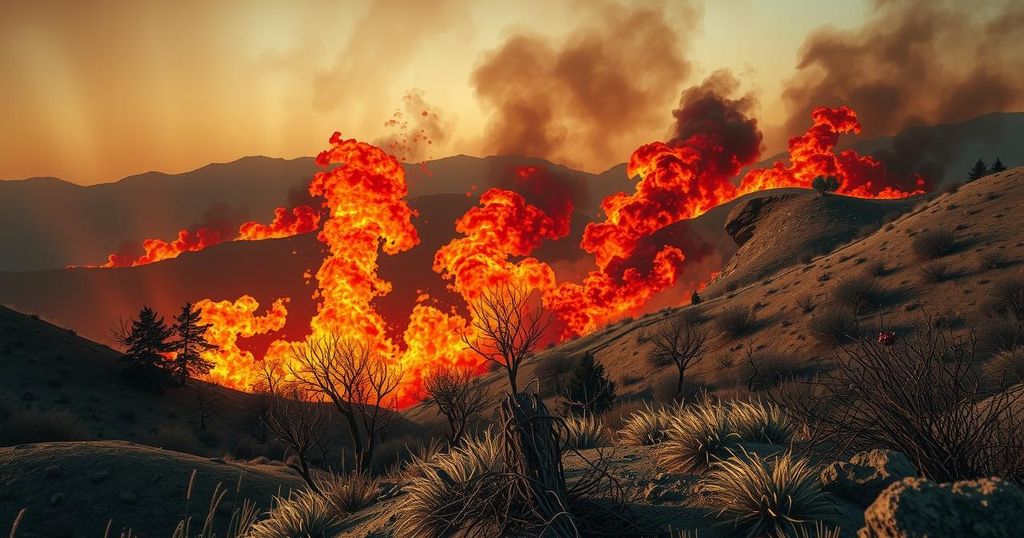Santa Ana winds exacerbate wildfires in California due to their strong, dry nature, heightened by climate change. These winds contribute to rapid fire spread and complicate fire management. Technological innovations enhance fire fighting capabilities, but comprehensive strategies are needed to mitigate potential disasters effectively.
The Santa Ana winds significantly contribute to California’s wildfires, especially under the increasing strains of climate change. These strong, warm winds, a common occurrence in Southern California, create highly arid conditions that facilitate fire outbreaks. Notably, the recent Pacific Palisades fire exemplifies how these winds can escalate wildfire intensity and spread.
The Santa Ana winds result from high-pressure systems forcing air from inland regions toward the coast, a process that leads to extreme heat and dehydration. With relative humidity dropping below 10%, vegetation becomes prime fuel for wildfires. Although the winds themselves do not change, climate-induced factors amplify their effects, making wildfire management more challenging.
Addressing the challenges posed by Santa Ana winds necessitates a comprehensive strategy that includes climate resilience, effective resource management, and public education. Implementing reforestation, proactive vegetation management, and fire-resistant urban designs are essential steps forward. Additionally, collaboration among experts will be vital to accurately predict wind behavior in an environment increasingly affected by climate extremes.
Original Source: www.drivingeco.com






